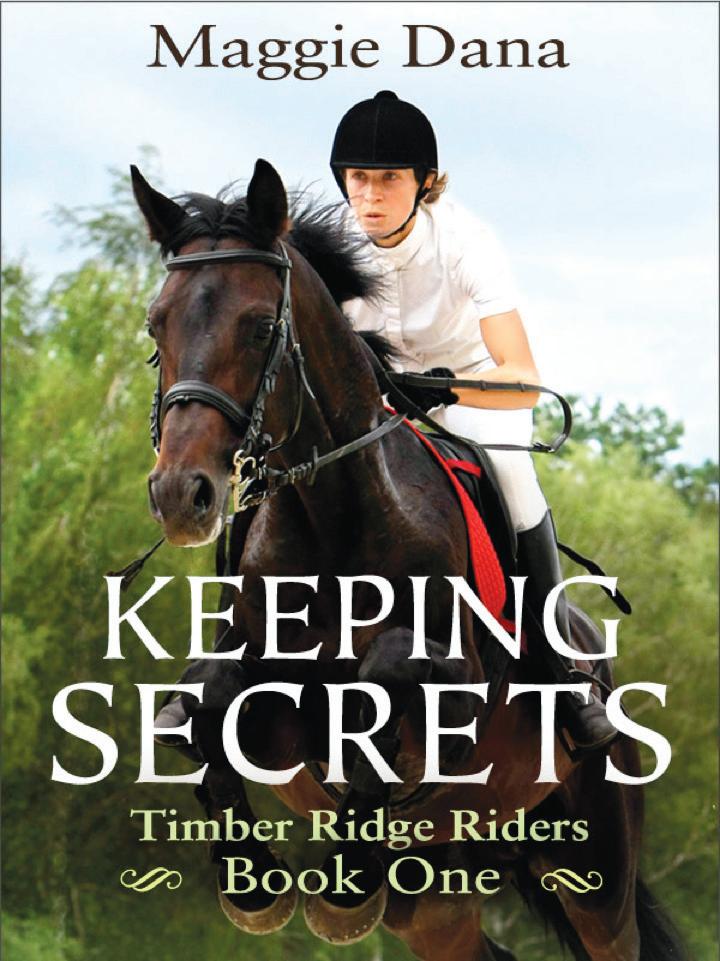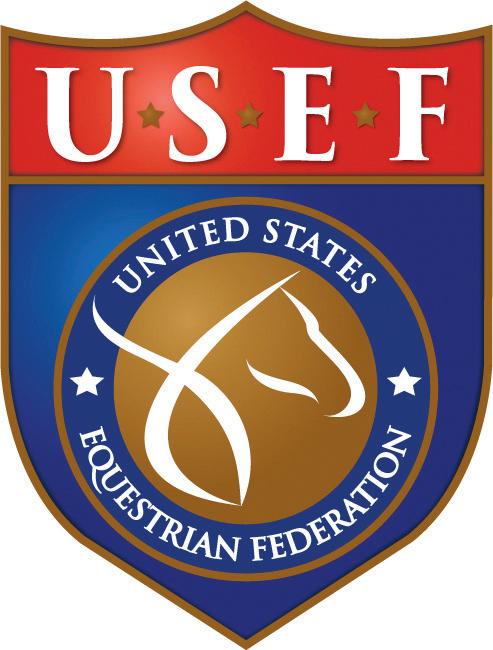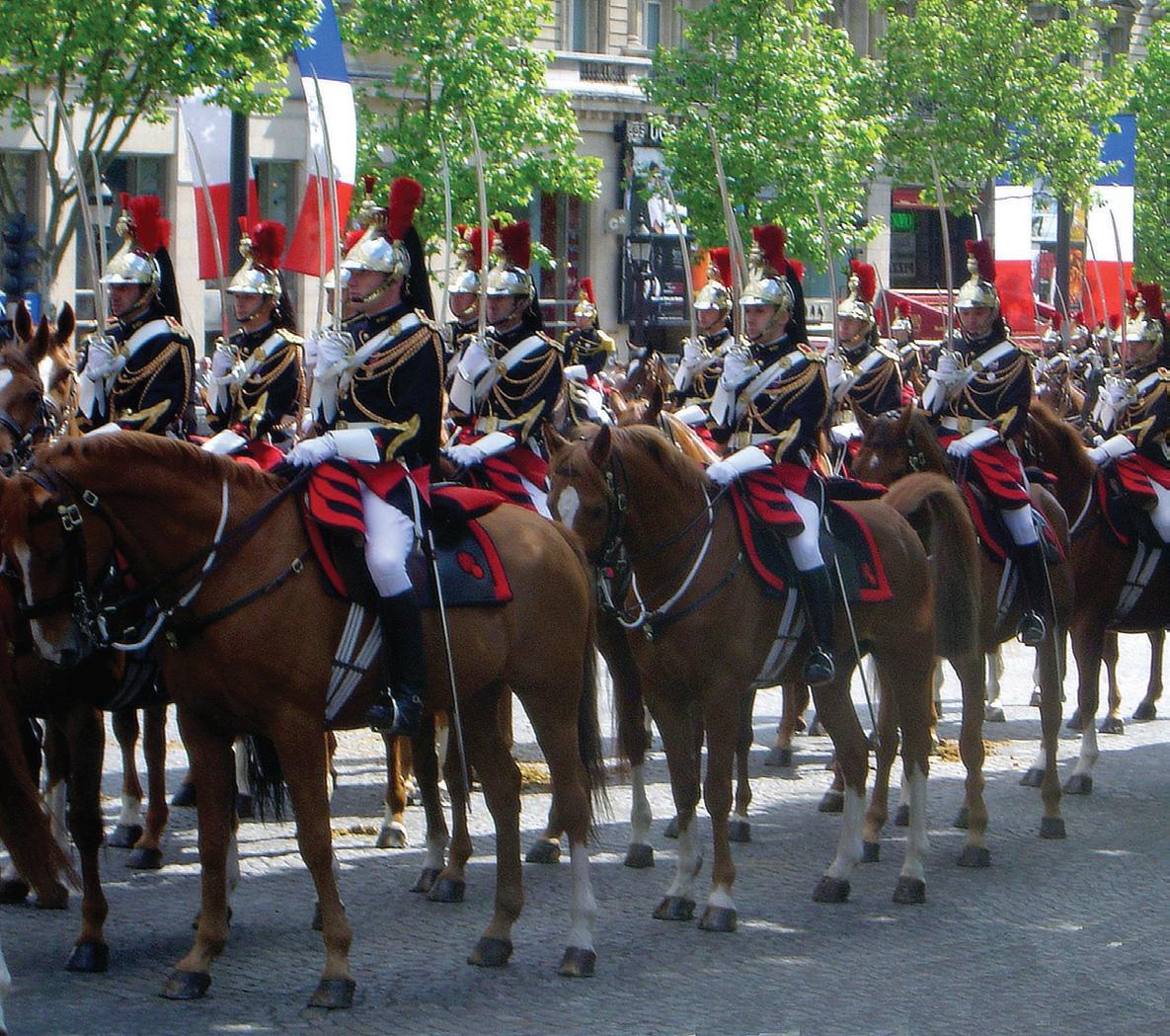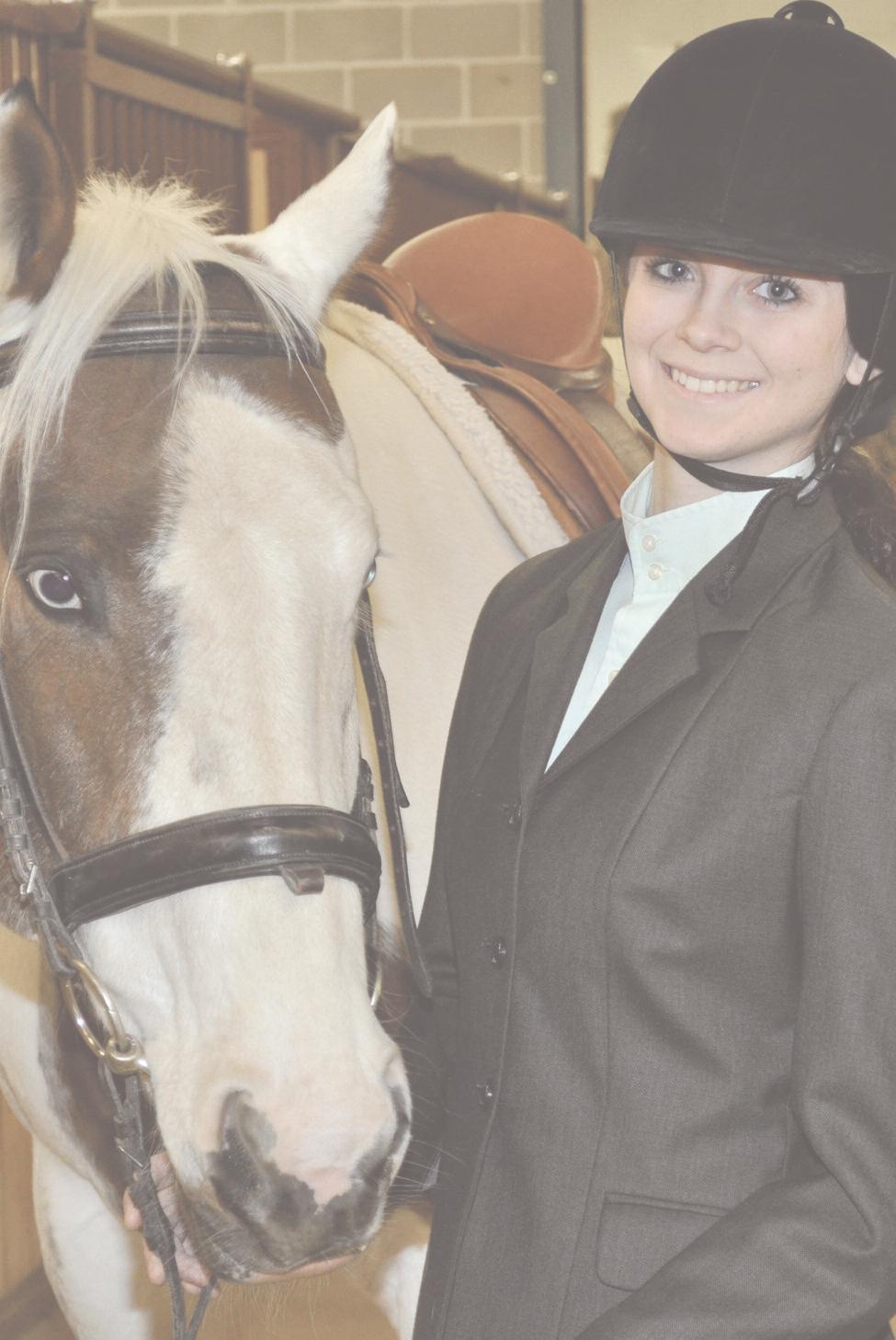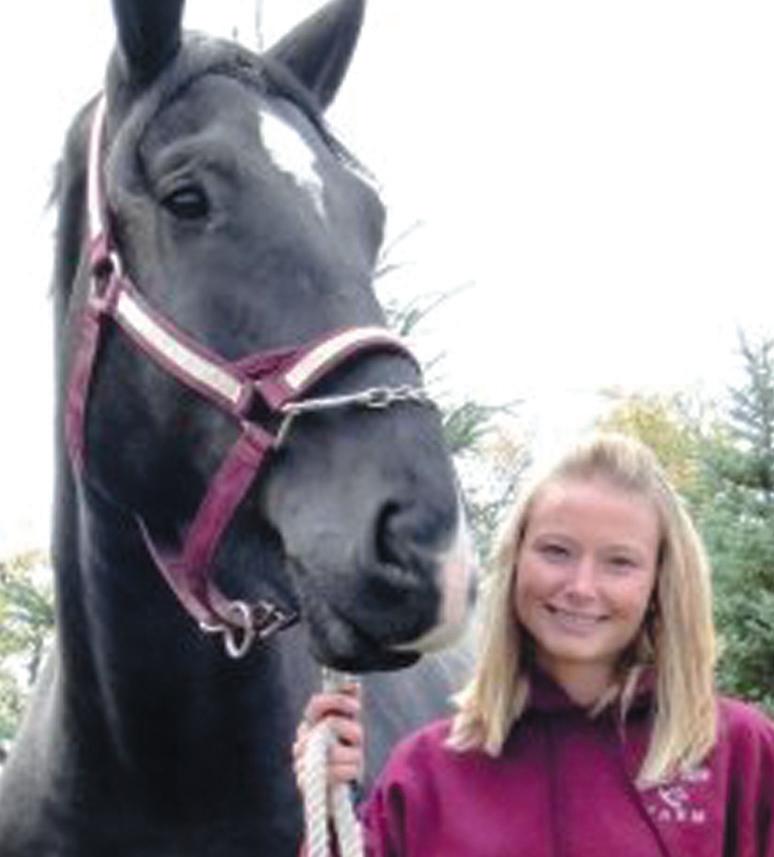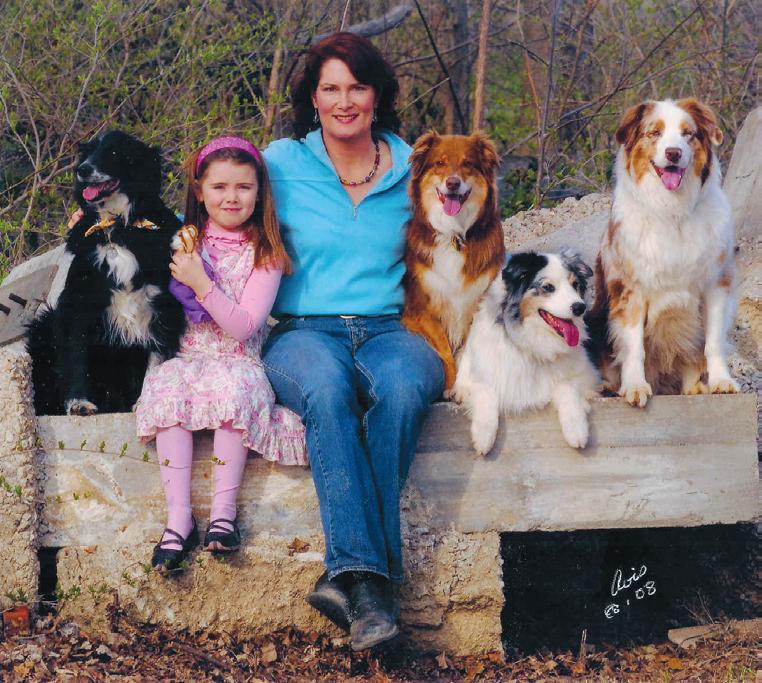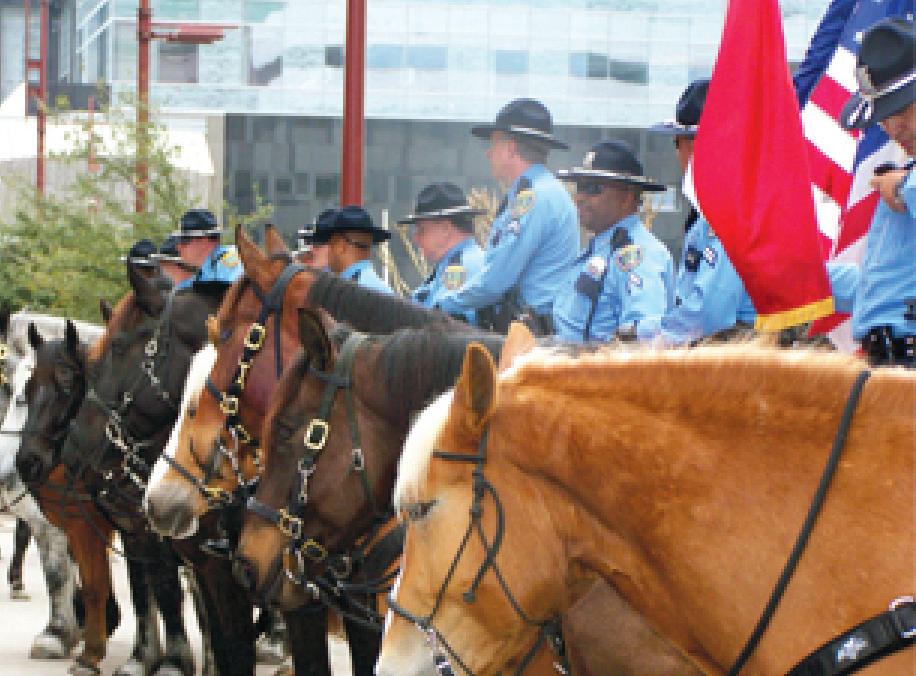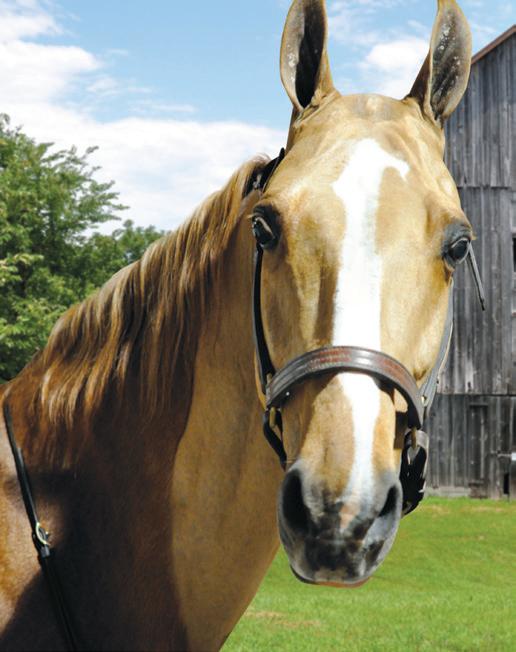H I - H O
S I L V E R ,
A W A Y !
Life in the Mounted Patrol When dealing with crowds, one mounted officer is as effective as seven to ten officers on foot. Their high visibility deters crime, and their popularity with the public helps to balance the distrust police departments frequently come up against.
I
by Nancy Norton, Executive Editor
f you are lucky, you have visited a city with a mounted police unit, and have seen its streets patrolled by officers on horseback. If you are very lucky, you live in a city with a mounted unit. But no matter how many times you have seen them, every time you get a chance to see a squad ride down the street you will probably stop to stand and watch. There is something really special about a mounted police unit. They perform a unique and valuable service for everything from crowd control to community relations. It has been said many times: no one ever asks to pet a police car. The oldest police departments were made up of officers both walking the beat and on horseback. Baltimore has the oldest mounted unit, started in 1888. The three largest cities in the country–New York, Los Angeles and Chicago–all have mounted squads. We put questions about police life from the back
of a horse to Sargent Leslie Wills of the Houston, Texas Mounted Patrol, and Sargent Joey Roberts of the Kansas City, Missouri Mounted Unit. Their answers might surprise you.
6
l
H O RSEANDACADEM Y. CO M
Horse & Academy: How many officers and how many horses do you have in your unit? Sgt. Wills: We currently have 28 Officers assigned to our unit and three Civilian Stable Attendants. We have 32 horses of all different breeds and colors. Sgt. Roberts: We have nine total: eight Officers and one Sergeant. We currently have 10 horses, but have the capability of maintaining a maximum of 12. All of the horses are donated to the police department and are trained in-house. H&A: Do you get assigned to the same horse all the time? Sgt. Wills: Officers do have regularly assigned horses that they ride on a daily basis. If something hapS EP TEM BER 2 0 1 2
pens to their horse (like being sick or injured) we have other horses for them to ride until their horse is back active again. Sgt. Roberts: Each officer is assigned a horse based on several different factors such as: size, riding ability and riding style. There are occasions when a horse may have thrown a shoe or have an injury preventing him from deployment, which would require an officer to ride another horse. H&A: Who takes care of feeding and grooming the horses? Sgt. Wills: Until last year we had a full Civilian Staff that did all of the feeding and grooming. Due to budget cuts they were all laid off and the officers began the stable management. We have now hired back three stable attendants, but the officers continue to assist. Sgt. Roberts: The maintenance of the facility, including all horse care,
is conducted by the officers and Sergeant within the section. H&A: Did all of the mounted police ride horses when they were growing up? Sgt. Wills: Actually many of the officers have never ridden when they apply. It is not a prerequisite. The only prerequisite is that they are top-notch police officers. I can teach them how to ride. Everyone goes through a minimum eight weeks of basic training, with monthly updates. Sgt. Roberts: Some of the officers have a background in riding, and some have no prior riding experience. Once assigned to the section, each officer is taught equitation specifically geared towards mounted police work. H&A: What additional training does someone interested in being a mounted patrol need? Sgt. Wills: They must be serious police officers with a great work ethic:

